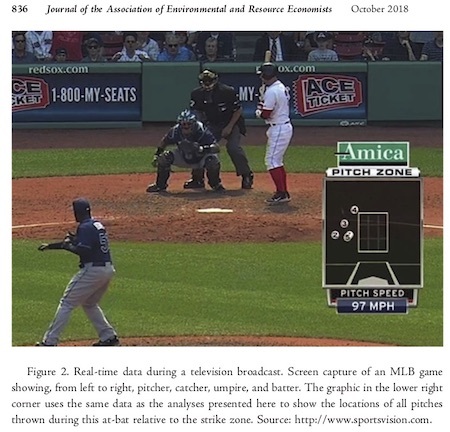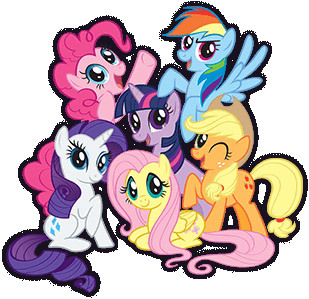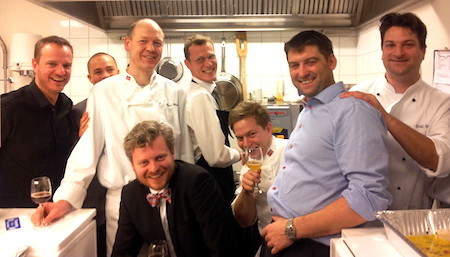Marc Abrahams's Blog, page 162
December 22, 2018
A look back at TV coverage of the herring-centric Ig Nobel visit to Sweden
Vetensakapens Värld produced a loving TV look, back in 2012, at the Ig Nobel show at the Karolinska Institute, in Stockholm, Sweden. That event included the first public discussion of the Soviet-submarine-and-farting-herring incident, the heart of which had until then been classified top secret by Swedish government. Despite the secrecy, an Ig Nobel Prize had been awarded (in 2004) to Magnus Wahlberg and Håkan Westerberg, the two Swedish marine biologists who were at the center of the Soviet-submarine-and-farting-herring incident. Both scientists appear in this report:
And here, if you click the link, is a sort-of-preview of that event, including a video interview done the previous month by Maggie Koerth-Baker, who was then Boing-Boing’s science correspondent.
There’s been an Ig Nobel show at the Karolinska Institute pretty much every year since 2012, each year featuring different Ig Nobel winners. The 2019 show will happen in early April; there will also be a show at Stockholm University—these will be part of the 2019 Ig Nobel EuroTour.

December 21, 2018
Playboy (the German edition) interviews Ig Nobel Prize winner Kees Moeliker, discoverer of homosexual necrophilia in the mallard duck
Playboy (the German edition) interviews Ig Nobel Prize winner Kees Moeliker, discoverer of homosexual necrophilia in the mallard duck:

December 20, 2018
“A psychoanalytic analysis of the superglue phenomenon” – in new book ‘Perspectives on Everyday Life’
In general, we don’t tend to think all that much about everyday things like, say, suitcases, milk, or alarm clocks. But fortunately, some do take the trouble to do so, and then write about it. Take for instance Arthur Asa Berger, who is Professor Emeritus in Broadcast and Electronic Communication Arts at San Francisco State University, US. He considers such things in a new book from publishers Palgrave►Pivot : Perspectives on Everyday Life : A Cross Disciplinary Cultural Analysis (Nov. 2018, $54.99 eBook, $69.99 Hardcover)
Where one can appreciate, for example, “a psychoanalytic analysis of the superglue phenomenon” (either methy-2-cyanoacrylate or ethyl-2-cyanoacrylate) in a section entitled : ‘Superglue and the Unconscious’
“What we have to recognize is that superglue is connected with two unconscious psychological phenomena: our desire for power and our belief in the magical. The power to put things together that had broken apart is something we all like because it is connected to the matter of making sure that there is “salvation” for things that have broken apart. Superglue is one way we can counter the forces of entropy, which we can define as a gradual decline to disorder in the world. Accidents can be rectified and the world order, in minor ways, can be maintained. Saving a broken pot is one small step that is connected to saving the world.”
Other everyday-life artefacts and occurrences covered in the book include – but are by no means limited to :
● Alarm Clocks
In this chapter we investigate the power of clocks, in many different forms, over our lives. We have wind-up clocks, digital clocks (the most popular form), and clock radios that tell us what the time is and have alarms to alert us when a certain time, that is important to use for one reason or another, is reached.
● Milk
This chapter considers the question of what milk is, and whether other milks such as soy milk and almond milk, which are called “impostor milks,” are really milk. It also deals with the question of whether people are addicted to milk and the assertion by a doctor that people consume too much milk, generally in the form of cheese.
● Hair Styles
In this chapter we examine different styles of hair and speculate about where they come from, discuss President Donald J. Trump’s hair style, which has been described in different ways, and consider hair styles and age. This leads to a consideration of the semiotics of hair—what different styles of hair signify about people who wear them, aberrant decoding of the messages from hair, and finally the matter of hair color and our attitudes towards blonde hair.
● College Rejection Letters
In this analysis, we consider the matter of college rejection letters and the fact that for some young people, being rejected at an elite university is the first time they have been disappointed in a major way. That is because the number of people applying to elite universities is enormous and institutions such as Stanford and Harvard accept only a small number of applicants. Being accepted at an elite university confers lifelong benefits on young people in terms of their sense of achievement and of accomplishment.
● Mattresses
The historical origins of the mattress are discussed followed by a discussion of the agony of choice involved in choosing a particular mattress from the seemingly countless number of companies making mattresses and the different models available. Two kinds of customers are discussed: maximizers, who want only the best at the best price, and satisfizers, who are not terribly particular about their choice of a mattress or any other product. Mattresses connote sleep and rest but choosing mattresses is one of the most agonizing and anxiety-ridden purchases people make, since mattresses last for many years. So if one purchases the wrong mattress, one has to live with that bad choice for a long time.
● Suitcases
The growth of the travel and tourism industry, now the largest industry in the world, means that suitcases—of one kind or another—are now of great importance, since we rely on them to transport our clothes and other things needed for travel. We discuss the size of the suitcase industry and how the design of suitcases has evolved over the years. There are so many different brands and kinds of suitcases that consumers have to deal with that choosing a suitcase generates anxiety in people purchasing them. The problem suitcase manufacturers face is how to make a suitcase that is light and strong, that will protect what we put in it, that is not too expensive, and will last a long time.
and ● Chandeliers at the 2017 Grammy Awards
This chapter explores the 2017 Grammy Awards use of chandeliers and suggests they were meant to be signifiers of status and of the “high class” nature of the show. Chandeliers are traditionally seen as symbols of status and wealth. Grammy Awards, like all award shows, want to suggest their high status and use elaborate sets, and in this case chandeliers, to affirm their status. The awards given at the 2017 Grammy Awards were very controversial, but that is often the case in award shows.
Research research by Martin Gardiner

December 19, 2018
And the heartbeat goes on: Nurse’s gift memento of patients’ final thumps
Becker’s Hospital Review reports:
How this Intermountain nurse comforts deceased patients’ families
Written by Mackenzie Bean
A registered nurse at Salt Lake City-based Intermountain Medical Center is responsible for spearheading an initiative to comfort the families of patients who died at the hospital’s respiratory intensive care unit, reports KSL TV.
To comfort patients’ relatives, Lisa Beglarian, RN, prints a patient’s EKG strip and places it in a laboratory tube with the following message for the individual’s family: “May my heartbeat always be a gentle reminder of the love I have for you.” …
KSL TV (Channel 5) interviewed Beglarian:
Modern Healthcare adds, in its own report about this:
It’s a nice gesture for the families to try to give them at least one positive memory of their experience in our ICU,” Beglarian said.
Here’s a photo of a final-gift strip with the accompanying Beglarian-designed card:
(Thanks to Maggie Fox for bringing the Beglarian EKG final-gift strip to our attention.)
BONUS: Historic video of Sonny and Cher performing the song “The Beat Goes On”:
BONUS: Though less personalized than a Beglarian EKG strip, 18k Rose Gold Plated Stainless Steel EKG Heartbeat Love Cardiogram Necklace Jewelry for Women would presumably be a lovely gift for some people. For a select few with a particular, unusual sensibility, EKG Rhythm Strip BLS Cardiology ICU Nurse EMT Gift Code Brown Toilet Paper might suitable, as might a V-Fib EKG Strip Design Postcard.
BONUS: Anyone who treasures opera would be delighted at seeing and hearing The Broken Heart Opera.

Effect of Air Pollution on Professional Baseball Umpires
Professional baseball umpires are not supposed to make errors, yet they sometimes do. That happens more often on days when the air is badly polluted, suggests a new scientific study.
If umpires make more bad decisions on bad-air days, then maybe so does anyone who has to make rapid judgment calls. As the saying goes: more research is needed.
The study is: “Air Quality and Error Quantity: Pollution and Performance in a High-Skilled, Quality-Focused Occupation,” James Archsmith, Anthony Heyes, and Soodeh Saberian, Journal of the Association of Environmental and Resource Economists, vol. 5, no. 4, October 2018. (Thanks to Tom Gill for bringing this to our attention.)

The authors, at the University of Maryland and the University of Ottowa, explain: “We provide the first evidence that short-term exposure to air pollution affects the work performance of a group of highly skilled, quality-focused employees. We repeatedly observe the decision making of individual professional baseball umpires, quasi-randomly assigned to varying air quality across time and space. Unique characteristics of this setting combined with high-frequency data disentangle effects of multiple pollutants and identify previously underexplored acute effects. We find that a 1 ppm increase in 3-hour CO causes an 11.5% increase in the propensity of umpires to make incorrect calls and a 10 mg/m3 increase in 12-hour PM2.5 causes a 2.6% increase.”
Anyone who reads the paper carefully will notice that there is a Trick. Specifically, the paper cites a study done by Michael A. Trick and colleagues: “Scheduling major league baseball umpires and the traveling umpire problem,” Michael A. Trick, Hakan Yildiz, and Tallys Yunes, Interfaces, vol. 42, no. 3, 2001, pp. 232–44.
Neither of those papers delves much into the related question of dust. Here’s a short video showing an umpire having to deal with a small, sudden uptick of airborne dust:
UPDATE (distantly related, sort of): Major League Baseball “players who sustained a concussion lost a mean of US$654,990 annually compared with players who took nonmedical leave.” That’s the word in a just-now-published study called “Short-Term Outcomes of Concussions in Major League Baseball: A Historical Cohort Study of Return to Play, Performance, Longevity, and Financial Impact.” (Thanks to Ivan Oransky for bringing this to our attention.)

December 18, 2018
Thievery and the power of engineering: It’s not just glitter
Mark Rober engineered a device to surprise people who steal packages from his front porch. His video explaining the device, and showing what happened, is satisfying to watch:

BONUS: The special Miscreant Trapping issue of the Annals of Improbable Research presents many other clever devices, by many clever people, to trap miscreants.

A dog reacting to a person behind a glass door, pretending to weep
Dog/door/pretend-weeping research by Julia Meyers-Manor:

(Thanks to the QI Elves for bringing this video to our attention.)

December 17, 2018
Recent progress in ‘My Little Pony’ studies
“This dossier represents a selection of papers presented at the first academic conference on My Little Pony (MLP), held at the University of Brighton in June 2014.”
 Of the papers generated as a result of the conference, a small selection are published in the Journal of Popular Television, Volume 3, Number 1. They are:
Of the papers generated as a result of the conference, a small selection are published in the Journal of Popular Television, Volume 3, Number 1. They are:
● From toys to television and back: My Little Pony appropriated in adult toy play , pp. 99-109(11). Author: Dr Katriina Heljakka (University of Turku)
“Research suggests that adults are increasingly widening the doors to their toy closets and demonstrating various play patterns (Heljakka 2013b). Toys, including MLP characters, are collected, cherished, customized, have stories created for them, are cosplayed, and communicated about. Everything starts with a toy character’s appearance, the moment the player falls in love with it through interaction, which can be all about visual engagement even before any manipulation, or object play, happens.”
● It’s Ok to be joyful? My Little Pony and Brony masculinity, pp. 111-118(8). Author: Mikko Hautakangas (University of Tampere)
“Bronies, the adult male fans of the animated television series My Little Pony: Friendship is Magic (2010–), have raised controversy in public discussions and on the Internet: male interest in something so obviously non-masculine seems to call for some kind of explanation, for instance, as a sexual subculture or as one more ironic Internet meme.”
● My Little Pony, tolerance is magic: Gender policing and Brony anti-fandom, pp. 119-125(7). Author: Bethan Jones (Aberystwyth University)
“The gendered nature of criticism in relation to female fans of ‘feminine’ texts has been explored by a number of scholars, but male fans of texts aimed at women, girls in particular, have been understudied in comparison.”
● Finding Bronies – The accidental audience of My Little Pony: Friendship is Magic, pp. 127-134(8). Author: Dr Claire Burdfield (Sheffield University Management School)
“While much critical scholarship has been devoted to the way that media companies undertake extensive market research to target their products to specific demographic segments, this article concentrates on the way that untargeted and unexpected viewers have coalesced around certain television programmes, and become the ‘accidental audience’. “
● The classical world is 20 per cent cooler: Greco-Roman pegasi in My Little Pony: Friendship is Magic, pp. 135-143(9). Author: Jen Cresswell (University of St Andrews)
“In a fantasy world, the animators and writers are free to construct realms with no constraints except their own imaginations. Any decision made is deliberate, including the choice to incorporate Greco-Roman iconography in the depiction of the pegasi tribe in the television series My Little Pony: Friendship is Magic (2010–). Why were these civilizations chosen for this type of horse, and what does this tell us of the audience preconceptions of the Ancient cultures of Greece and Rome?”
Also see:
Recent progress in Wonder Woman studies
Recent progress in Kung Fu Panda studies
Recent progress in Quidditch studies (part 3)

December 15, 2018
When seafood scientists became food-poisoned by their own holiday seafood
Having failed to perish, they proceeded to publish.
Serendipity and not-careful-enough cooking technique by Norwegian shellfish scientists (for their own Christmas gathering) led to a nasty illness for two-thirds of their group, which led to a biomedical investigation, which led to a published scientific study about it all, which led to a report in Forskening.no which begins:
When seafood scientists became food poisoned by their own seafood
There was a skew when seafood scientists were to arrange their own Christmas table—Then the pursuit of the answers began.
Friday 13th of December 2013: It is morning and Arne Duinker is in full swing making the food that he and colleagues have to enjoy on the Christmas table a few hours later.
Doves, a daily seafood scientist, have allied themselves with a few colleagues and some professional seafood chefs.
Little do they know that something is going to be terribly wrong.
“This was the first Christmas table where we decided to make seafood for everyone, and we should do it ourselves,” said Duinker.
In 2013 he was working at the National Institute of Nutrition and Seafood Institute (NIFES), which has today become a part of the Institute of Marine Research (HI)….
(Thanks to Kjell Ivar Øvergård for bringing this to our attention.)
BONUS: Basic info about norovirus, the little protagonist in this drama.

December 14, 2018
The Animalia Chorus, a bio-hallelujan vocal treat
Behold, or more to the point, listen to this performance by the (sometimes one-person) singing group A Capella Science, of “The Animalia Chorus”:

(Thanks to Stan Malcolm for bringing this to our attention.)

Marc Abrahams's Blog
- Marc Abrahams's profile
- 14 followers









